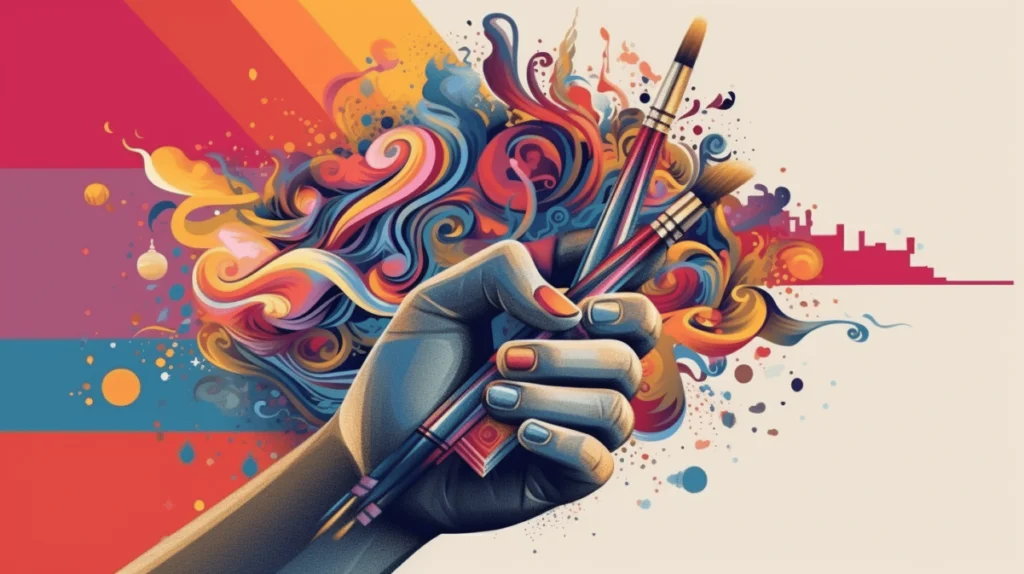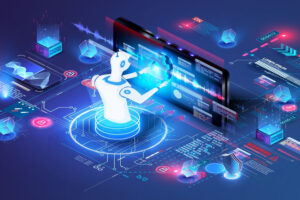In the rapidly evolving world of digital content creation, AI for cinematic graphic design is emerging as a groundbreaking tool. This technology is revolutionizing how creators visualize and execute their ideas, making the process more efficient and innovative.

The Evolution of Cinematic Graphic Design
Cinematic graphic design has always been about creating visual narratives that captivate audiences. Traditionally, this required a significant amount of time and skill. However, with the integration of AI, the landscape is shifting. AI tools are now capable of automating complex tasks, allowing designers to focus more on creativity and less on manual labor.
How AI is Enhancing Creativity
AI for cinematic graphic design enhances creativity by providing tools that can generate ideas and suggest improvements. These AI systems analyze a vast amount of data to understand trends and preferences, helping designers create visuals that resonate with audiences.
AI Tools in Action
AI tools can transform simple sketches into detailed designs, suggest color palettes based on emotional impact, and even generate entire scenes based on textual descriptions. This level of assistance not only speeds up the design process but also opens new avenues for experimentation.
Streamlining the Workflow
One of the significant benefits of using AI for cinematic graphic design is the ability to streamline workflows. Tasks that once took hours can now be completed in minutes. For instance, AI can automate repetitive tasks like rendering and compositing, allowing designers to focus on the artistic aspects of their projects.
Real-Time Adjustments
AI enables real-time adjustments, a feature that is particularly beneficial during tight deadlines. Designers can make changes on the fly, with AI suggesting optimal solutions based on the current design framework.
The Role of AI in Visual Effects
Visual effects (VFX) are a critical component of cinematic design. AI is enhancing VFX by enabling more realistic simulations and automating tedious processes. This not only improves the quality of the final product but also reduces the time and resources required.
Creating Realistic Simulations
AI algorithms can simulate natural phenomena like fire, water, and smoke with unprecedented realism. These simulations are crucial for creating believable visual narratives in films and digital media.
AI and Animation
Animation is another area where AI for cinematic graphic design is making significant strides. AI tools can automate frame-by-frame animation, allowing animators to focus on storytelling rather than technical details.
Automating Animation Processes
With AI, animators can generate keyframes based on initial sketches and use machine learning to predict subsequent frames. This automation speeds up the animation process while maintaining high-quality results.
Enhancing Collaboration
AI is also improving collaboration among creative teams. By using AI tools, team members can share ideas and feedback more efficiently, ensuring that everyone is on the same page and that the project remains cohesive.
Facilitating Communication
AI-driven platforms facilitate communication by providing real-time updates and suggestions. This fosters a more dynamic and interactive design process, where ideas can be exchanged and refined rapidly.
Challenges and Considerations
While the benefits of AI for cinematic graphic design are significant, there are challenges and considerations to keep in mind. Designers must ensure that AI tools are used ethically and that the final product remains true to the creator’s vision.
Ethical Use of AI
As AI becomes more integrated into the design process, questions about copyright and authorship arise. Designers must navigate these issues carefully to ensure that AI-generated content respects intellectual property rights.
The Future of AI in Design
The future of AI for cinematic graphic design is promising. As AI technology continues to evolve, it will offer even more sophisticated tools that will further empower designers. This evolution will lead to more immersive and engaging visual experiences.
What’s Next?
We can expect AI to become more intuitive, understanding not just the technical aspects of design but also the emotional and cultural contexts. This will enable designers to create content that is not only visually stunning but also deeply meaningful.
Conclusion
In conclusion, AI for cinematic graphic design is reshaping the way we create visual content. By automating complex tasks and enhancing creativity, AI is empowering designers to push the boundaries of what’s possible. As we look to the future, the potential for AI in design is vast and exciting.

FAQs
What is AI’s role in cinematic graphic design?
AI automates complex tasks and enhances creativity, allowing designers to focus on storytelling and innovation.
How does AI improve visual effects?
AI improves visual effects by enabling realistic simulations and automating tedious processes, enhancing both quality and efficiency.
What are the ethical considerations of using AI in design?
Designers must ensure ethical use of AI, respecting intellectual property rights and maintaining the integrity of the creator’s vision.
For more insights on how AI is transforming design, visit Many Pixels.
Explore more about AI in design trends at Design Trends and learn about Real-Time Updates.







